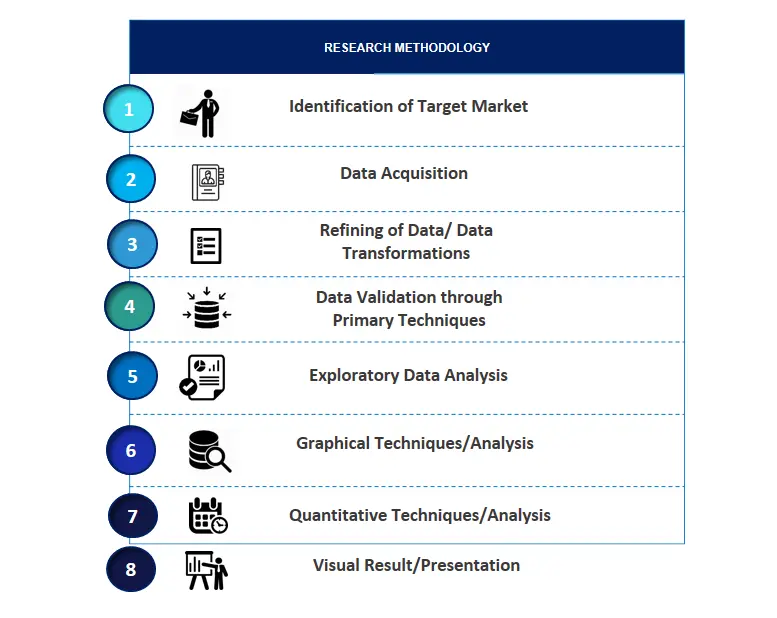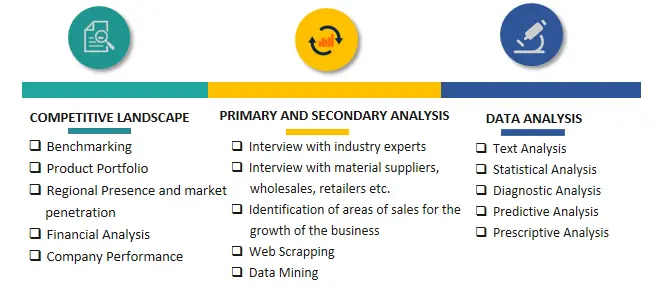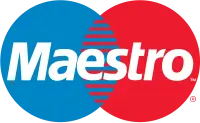
Formic Acid Market Trends, Growth, Size, Revenue, Demand, Challenges and Future Competition
Formic Acid Market Size- By Production Method, By Application, By End User, By Concentration- Regional Outlook, Competitive Strategies and Segment Forecast to 2033
| Published: Jul-2023 | Report ID: CHEM2379 | Pages: 1 - 236 | Formats*: |
| Category : Chemical & Materials | |||
- Chemical Properties: Formic acid has the chemical formula HCOOH and a molecular weight of 46.03 g/mol. It is a colourless liquid with a pungent odour and a boiling point of 100.8 degrees Celsius. It is highly soluble in water and readily mixes with other polar solvents.
- Environmental Impact: Formic acid is considered a more environmentally friendly alternative to certain harsher chemicals. It is biodegradable and does not persist in the environment. However, it is still important to handle and dispose of it properly to prevent environmental contamination.
-010023925072023.jpg)
-010061725072023.jpg)
| Report Metric | Details |
| Market size available for years | 2019-2033 |
| Base year considered | 2022 |
| Forecast period | 2023-2033 |
| Segments covered | By Production Method, By Application, By End User, By Concentration |
| Regions covered | Asia Pacific, Europe, Middle East and Africa, North America, Latin America |
| Companies Covered | BASF Intermediated Division, BASF SE, Celanese Corporation, Chongqing Chua Ndong Chemical (Group) Co., Ltd, Eastman Chemical Company, Fei Cheng Acid Chemicals Co., Ltd., Fleur hem, Inc., Gujarat Narmada Valley Fertilizers & Chemicals Ltd. (GNFC), LUXI Group Co., Ltd, Yara International ASA |
- Chemical Manufacturers
- Livestock and Poultry Industry
- Leather and Textile Industry
- Cleaning and Sanitizing Product Manufacturers
| By Production Method: | |
| By Application: | |
| By End User: | |
| By Concentration: |
- Global Formic Acid Market Size (FY’2023-FY’2033)
- Overview of Global Formic Acid Market
- Segmentation of Global Formic Acid Market By Production Method (Carbonylation of Methanol, Oxalic Acid)
- Segmentation of Global Formic Acid Market By Application (Animal Feed, Cleaning Agent, Dyeing, Finishing Textile, Leather Production, Preservatives, Rubbers, Others)
- Segmentation of Global Formic Acid Market By End User (Agriculture, Pharmaceutical, Others)
- Segmentation of Global Formic Acid Market By Concentration (85%, 90%, 94%, 99%)
- Statistical Snap of Global Formic Acid Market
- Expansion Analysis of Global Formic Acid Market
- Problems and Obstacles in Global Formic Acid Market
- Competitive Landscape in the Global Formic Acid Market
- Impact of COVID-19 and Demonetization on Global Formic Acid Market
- Details on Current Investment in Global Formic Acid Market
- Competitive Analysis of Global Formic Acid Market
- Prominent Players in the Global Formic Acid Market
- SWOT Analysis of Global Formic Acid Market
- Global Formic Acid Market Future Outlook and Projections (FY’2023-FY’2033)
- Recommendations from Analyst
1.1. Scope of the report1.2. Market segment analysis
2.1. Research data source
2.1.1. Secondary Data2.1.2. Primary Data2.1.3. SPER’s internal database2.1.4. Premium insight from KOL’s
2.2. Market size estimation
2.2.1. Top-down and Bottom-up approach
2.3. Data triangulation
4.1. Driver, Restraint, Opportunity and Challenges analysis
4.1.1. Drivers4.1.2. Restraints4.1.3. Opportunities4.1.4. Challenges
4.2. COVID-19 Impacts of the Global Formic Acid Market
5.1. SWOT Analysis
5.1.1. Strengths5.1.2. Weaknesses5.1.3. Opportunities5.1.4. Threats
5.2. PESTEL Analysis
5.2.1. Political Landscape5.2.2. Economic Landscape5.2.3. Social Landscape5.2.4. Technological Landscape5.2.5. Environmental Landscape5.2.6. Legal Landscape
5.3. PORTER’s Five Forces
5.3.1. Bargaining power of suppliers5.3.2. Bargaining power of buyers5.3.3. Threat of Substitute5.3.4. Threat of new entrant5.3.5. Competitive rivalry
5.4. Heat Map Analysis
6.1. Global Formic Acid Market Manufacturing Base Distribution, Sales Area, Product Type6.2. Mergers & Acquisitions, Partnerships, Product Launch, and Collaboration in Global Formic Acid Market
7.1. Global Formic Acid Market Value Share and Forecast, By Production Method, 2023-20337.2. Carbonylation of Methanol7.3. Oxalic Acid
8.1. Global Formic Acid Market Value Share and Forecast, By Application, 2023-20338.2. Animal Feed8.3. Cleaning Agent8.4. Dyeing8.5. Finishing Textile8.6. Leather Production8.7. Preservatives8.8. Rubbers8.9. Others
9.1. Global Formic Acid Market Value Share and Forecast, By End User, 2023-20339.2. Agriculture9.3. Pharmaceutical9.4. Others
10.1. Global Formic Acid Market Value Share and Forecast, By Concentration, 2023-203310.2. 85%10.3. 90%10.4. 94%10.5. 99%
11.1. Global Formic Acid Market Size and Market Share
12.1. Global Formic Acid Market Size and Market Share By Production Method (2019-2026)12.2. Global Formic Acid Market Size and Market Share By Production Method (2027-2033)
13.1. Global Formic Acid Market Size and Market Share By Material Type (2019-2026)13.2. Global Formic Acid Market Size and Market Share By Material Type (2027-2033)
14.1. Global Formic Acid Market Size and Market Share By Application (2019-2026)14.2. Global Formic Acid Market Size and Market Share By Application (2027-2033)
15.1. Global Formic Acid Market Size and Market Share By End User (2019-2026)15.2. Global Formic Acid Market Size and Market Share By End User (2027-2033)
16.1. Global Formic Acid Market Size and Market Share By Concentration (2019-2026)16.2. Global Formic Acid Market Size and Market Share By Concentration (2027-2033)
17.1. Global Formic Acid Market Size and Market Share By Region (2019-2026)17.2. Global Formic Acid Market Size and Market Share By Region (2027-2033)17.3. Asia-Pacific
17.3.1. Australia17.3.2. China17.3.3. India17.3.4. Japan17.3.5. South Korea17.3.6. Rest of Asia-Pacific
17.4. Europe
17.4.1. France17.4.2. Germany17.4.3. Italy17.4.4. Spain17.4.5. United Kingdom17.4.6. Rest of Europe
17.5. Middle East and Africa
17.5.1. Kingdom of Saudi Arabia17.5.2. United Arab Emirates17.5.3. Rest of Middle East & Africa
17.6. North America
17.6.1. Canada17.6.2. Mexico17.6.3. United States
17.7. Latin America
17.7.1. Argentina17.7.2. Brazil17.7.3. Rest of Latin America
18.1. BASF Intermediated Division
18.1.1. Company details18.1.2. Financial outlook18.1.3. Product summary18.1.4. Recent developments
18.2. BASF SE
18.2.1. Company details18.2.2. Financial outlook18.2.3. Product summary18.2.4. Recent developments
18.3. Celanese Corporation
18.3.1. Company details18.3.2. Financial outlook18.3.3. Product summary18.3.4. Recent developments
18.4. Chongqing Chua Ndong Chemical (Group) Co., Ltd.
18.4.1. Company details18.4.2. Financial outlook18.4.3. Product summary18.4.4. Recent developments
18.5. Eastman Chemical Company
18.5.1. Company details18.5.2. Financial outlook18.5.3. Product summary18.5.4. Recent developments
18.6. Fei Cheng Acid Chemicals Co., Ltd.
18.6.1. Company details18.6.2. Financial outlook18.6.3. Product summary18.6.4. Recent developments
18.7. Fleur hem, Inc.
18.7.1. Company details18.7.2. Financial outlook18.7.3. Product summary18.7.4. Recent developments
18.8. Gujarat Narmada Valley Fertilizers & Chemicals Ltd. (GNFC)
18.8.1. Company details18.8.2. Financial outlook18.8.3. Product summary18.8.4. Recent developments
18.9. LUXI Group Co., Ltd.
18.9.1. Company details18.9.2. Financial outlook18.9.3. Product summary18.9.4. Recent developments
18.10. Yara International ASA
18.10.1. Company details18.10.2. Financial outlook18.10.3. Product summary18.10.4. Recent developments
18.11. Others
SPER Market Research’s methodology uses great emphasis on primary research to ensure that the market intelligence insights are up to date, reliable and accurate. Primary interviews are done with players involved in each phase of a supply chain to analyze the market forecasting. The secondary research method is used to help you fully understand how the future markets and the spending patterns look likes.
The report is based on in-depth qualitative and quantitative analysis of the Product Market. The quantitative analysis involves the application of various projection and sampling techniques. The qualitative analysis involves primary interviews, surveys, and vendor briefings. The data gathered as a result of these processes are validated through experts opinion. Our research methodology entails an ideal mixture of primary and secondary initiatives.



Frequently Asked Questions About This Report
PLACE AN ORDER
Year End Discount
Sample Report
Pre-Purchase Inquiry
NEED CUSTOMIZATION?
Request CustomizationCALL OR EMAIL US
100% Secure Payment






Related Reports
Our Global Clients
Our data-driven insights have influenced the strategy of 200+ reputed companies across the globe.




















